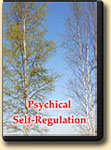The Highest Yoga
|
Articles:
|
Dharma, Dharmakaya, Nirodhi, NirvanaThe term dharma has two similar meanings: the law of existence and predestination. One can talk about dharma as about individual predestination of a particular person or as about the Universal Law of the Evolution and of our existence (Sanathana Dharma, in Sanskrit). It is clear that an individual dharma can be understood fully only on the basis of understanding of the universal dharma. Therefore, let us consider now the basic knowledge about the Sanathana Dharma. In the boundless universal space there exists One Macrobeing called the Absolute. It is eternal and infinite in size. It is multidimensional, i.e. It exists simultaneously in several spatial dimensions called lokas in Sanskrit or eons in Greek. Its main Essence is the Primordial Consciousness, Which is called — in different languages — by the terms Ishvara, the Creator, Allah, Tao, God-the-Father, etc. The Primordial Consciousness is the Heart of the Absolute, i.e. the Main Part of the Absolute. It exists in the highest, subtlest spatial dimension, which is called the Abode of the Creator. The Absolute exists in an unceasing process of Its further development, evolution. It is with this purpose that the Primordial Consciousness creates islets of the material world (prakriti) of the protomatter (protoprakriti). Then germs of future souls get incarnated on these islets of matter with the purpose of development. They go through stages of growth in material bodies of different biological species by incarnating first in small bodies of the most primitive structure, then in vegetal and animal bodies — up to incarnations into human bodies. The meaning of this process is to allow individual souls to develop up to the level when they become worthy of infusing into the Primordial Consciousness and thus enriching It with themselves. It is clear that such a goal can be realized only after many successful human incarnations. The Primordial Consciousness is an Aggregate of all Souls who have merged with It. This process of enriching of the Primordial Consciousness goes on forever. It takes place now as well.* Let us note that on each planet inhabited by incarnated beings, two evolutionary processes take place: a) evolution of organic bodies that are used for incarnations of souls and b) evolution of souls that incarnate into these bodies. Both these processes are controlled by the Primordial Consciousness — through Holy Spirits. The speed of the evolution at the human stage of development depends to a significant degree on the person himself or herself. Every one of us has freedom of will of choosing one’s own path: to the Perfection of the Primordial Consciousness or in the opposite direction, to hell — to the “cesspool” of the Evolutionary Process. What can we do to participate most successfully in this Evolutionary Process? One may ask this question in another way to make the answer more evident: how can we become Perfect, what are the components of the Perfection? Let us see: what are the qualities of the Primordial Consciousness (as the Standard of Perfection)? It is the most subtle (as opposed to coarseness) form of consciousness, and It is giant! Therefore we have to begin with accustoming ourselves to living in subtle and subtlest emotional states. After all, emotions are states of ourselves as individual consciousnesses (souls)! If we accustom ourselves to subtle emotions, we will appear after the death of the body among other souls like us, in paradise at the least. If we accustom ourselves to staying in emotional coarseness, we program ourselves for life in hell among other beings like us. But our ultimate goal is to settle in the Abode of the Primordial Consciousness in the infinite Embrace of Mergence with other Holy Spirits. Thus we enrich the Primordial Consciousness with all the best accumulated by us in ourselves and gain an opportunity to serve other evolving beings from the position of our own Highest Perfection. In order to help us master subtlety of the consciousness, Representatives of the Creator imparted to us corresponding principles of life, precepts. They contain, among other things, recommendations to learn to live without negative emotions (see more details in [2,8-10,13-18,21]). The most complete sets of such precepts were given to us through Jesus Christ and Sathya Sai Baba. Let me note also that mastering these principles of life is not possible without mastering the art of psychical self-regulation [9].* One has to understand also that a crucial factor on the Path to Perfection is the level of one’s intellectual development. Without a developed intellect, one can neither comprehend the essence of the Universal Evolutionary Process nor understand the meaning of concrete Divine precepts! Thus we can understand the reason for numerous religious perversions, which are dominant on our planet today. They include deification, imposition of various religious “rules” on the believers: which clothes they have to wear, which prayers to recite, which bodily movements to perform, etc. And quite often, it substitutes for true spiritual efforts on self-development! Intellectual development is the aspect of perfection which goes on most slowly as compared to other aspects. And we have to understand that one should not teach serious techniques of the development of consciousness to intellectually undeveloped people. This concerns, first of all, people who are young — both ontogenetically (i.e. in the current incarnation) and psychogenetically (i.e. from the standpoint of the evolutionary age of the soul) [5-11]. One of the parameters for assessing one’s intellectual abilities is the creative ability of the mind. What should one do to develop the intellect most efficiently? The answer is simple: to study everything that is useful for walking the spiritual Path. This includes knowledge on medicine, biology, philosophy, ethnography, different kinds of art, geology, physics, etc. * * * Dharmakaya is “a body of the Path”. It does not concern our ordinary physical bodies. The point here is that we have to grow new non-material bodies of energies of individual consciousnesses — so that in these bodies we can traverse the Path leading from the state of an ordinary person to spiritual Perfection and to Mergence with the Primordial Consciousness. Soul (in the usual meaning) is denoted in Sanskrit by the term jiva. Yet in Sanskrit there is another word: buddhi. It denotes a soul developing with the help of the methods of buddhi yoga. The term Buddha has the same root as the word buddhi. Buddha is the One Who has achieved Perfection through buddhi yoga. By the way, Krishna in the Bhagavad Gita [8,11] tells about buddhi yoga among other things. One may say that buddhi yoga is a system of methods of development of dharmakayas. The word dharmakaya is a synonym of the word buddhi (it can be a full or not full synonym — depending on the meaning assigned to this word in different spiritual schools). What is the methodology of buddhi yoga? The initial basis of this methodology consists in development of the spiritual heart — an energy structure which is formed initially in the chakra anahata; then it has to be developed and to begin to function outside the material body. It is important to note that everyone — independent of the age of the body or soul — can prepare themselves for mastering this large stage of self-development and benefit much from this. Namely, it implies “opening” and purifying the anahata, learning to live in it and to perceive the outer world from it, to react to outer information from it. It is important because this chakra is responsible for producing the entire spectrum of the emotions of love. Everyone can become convinced in this: no coarse emotions (like irritation and other forms of anger) can occur while we stay with the consciousness in the anahata! While being in the anahata we can experience only the emotions of love: tender and caring attitude, gratitude, admiration, respect, etc. Those who have mastered thus the art of psychical self-regulation can avoid many misdeeds and wrong thoughts that originate from one’s own coarse emotional states and result in ill karmic consequences. Those who have achieved stable anahatic states of the consciousness, even if they do not manage to achieve Mergence with the Primordial Consciousness in the current incarnation, — become inhabitants of paradise until the next incarnation. And the next incarnation will be very favorable for them in all respects, including conditions for continuing spiritual development. … How can we develop the dharmakayas? On this path we have to learn: 1. To enter the anahata with the entire consciousness and to look from within it to all six directions with an emphasis on looking backward; 2. To expand the spiritual heart outside the body; helpful in this regard are the methods of filling with oneself (as a consciousness) the cocoons of trees suitable for this work, filling expanses over large water bodies, over sand deserts, or in the mountains. After that, if the practitioners have achieved the necessary level of refinement of the consciousness, they can begin to master Mergence with Holy Spirits in Their Mahadoubles; training in filling with oneself the expanses found in the lokas of protoprakriti and protopurusha is also very important [9]; the mechanism of Mergence with Brahmanic Manifestations of the Primordial Consciousness (i.e. with Holy Spirits) is based on the ability to make the lower self disappear and to replace it with “non-I” (it is described in the next part of this chapter). 3. To connect to the spiritual heart all the best of the accumulated in the lower dantians, including the intellectual and power potentials; for this purpose, at a certain stage of formation of the dharmakaya, one pays attention to constructing it of the chakras that are moved outside the body; in the beginning of this process the dharmakaya is made as a “pillar” of interconnected chakras, the upper four of them remain partially in the body and the lower three chakras extend this “pillar” backward-downward with respect to the body; all this is done in a scale much larger than the body: these chakras has to become giant; a developed dharmakaya represents a kilometers-size structure (and it is clear that one cannot grow up to such a size quickly: one needs years of making efforts); the valuable structures of the upper dantian are moved to the dharmakaya in other way*; 4. To act effectively with the arms and hands of the dharmakaya; this is important for moving in multidimensional space and for exerting transformational influence on one’s own body and on other objects; 5. To live and to act in the state of one’s own Mahadouble far outside the material body; 6. It is desirable to create not one but two dharmakayas: left and right ones; it is useful for cognition of Paramatman. Further efforts have to be directed at achieving Mergence with the Primordial Consciousness and strengthening this Mergence, also at helping other worthy people on this Path. * * * Mastering Nirodhi implies “burning away”, destruction of one’s own lower self for the sake of Mergence with the Higher Self — with the Atman and then with Paramatman, which exist in higher spatial dimensions. Without cognizing Nirodhi one cannot achieve Higher Nirvana, which consists in stable Mergence with the Primordial Consciousness. After all, such a Mergence implies infusion of the small human consciousness (whatever large it may seem from the starting point of the Path) — into the infinite Universal Ocean of the Primordial Consciousness. To merge with this Consciousness means to sink and to disappear in It!* Only in this way one can become It! For this purpose one has to learn to disappear as a self and to enter the state of non-I. Thus the individual consciousness of the practitioner enters the state of full mergence with the Consciousness existing around the practitioner. The method of achieving this is called total reciprocity.* One has to learn it first in one of the subtle lokas — then one becomes able to master it in the loka of the Primordial Consciousness. It is important that the above said can be cognized only by the structures of an individual consciousness that are based on the developed spiritual heart. There are no other possibilities. Preparatory elements of self-development that allow one to master Nirodhi are the basic norms of ethically correct behavior suggested to us by Representatives of the Primordial Consciousness. They suggest that we strive to rid ourselves of numerous manifestations of egocentrism such as envy, jealousy, capability to feel offended, to revenge, to display conceit or any other variations of self-elevation and self-praise. Let me note that all the mentioned emotional states can occur only in the head chakra ajna and can never in the anahata. The developed lowliness of mind (lowly feeling of oneself with regard to different variations of education of me by my Main Teacher — the Primordial Consciousness) together with total reciprocity allow one to master Godcenteredness (or God-centrism) as opposed to human egocentrism. The center of self-perception of such an adept can be moved easily and naturally into the Heart of the Absolute; such an adept can really feel the entire Evolutionary Stream of development and advancement of consciousnesses within the Absolute! He or she infuses into this Stream, merges with it, and feels oneself as it! Staying in this Stream allows the adept to realize fully the principle suggesting that we love other evolving beings as ourselves or even more than ourselves. Selfishness, envy, spirit of competitiveness — such emotions and thoughts cannot now occur! Now I am only an integral part of the Stream of the Evolution, and there is no difference to me who will reach the Goal first; I help everyone as much as I can, including those who advance quicker than I! * * * The term Nirvana denotes the state of Mergence with a Divine Consciousness. Krishna [8,11] talked about three kinds of such a Mergence: a) Nirvana in Brahman (namely, Mergence with Holy Spirits in Their giant Forms — Mahadoubles), b) Nirvana in Ishvara (in the Primordial Consciousness, in the Heart of the Absolute), and c) Nirvana as a Mergence with the entire Absolute. One can distinguish also two Nirvanic states: static and dynamic. One of the two manifestations of the latter is one’s activity as a Mahadouble on helping embodied beings. Another dynamic state is the Divine Fire. The above said corresponds to two observable states of the Primordial Consciousness — a) transparent Calm and b) Fiery state when the Primordial Consciousness enters the state of increased activity. They Who have cognized the higher forms of Nirvana can become convinced in the existence of this phenomenon from Their own experience: now They, too, can abide in the Blissful Calm of the Primordial Consciousness, in full Mergence in Love with Others Who have achieved it, — or They can enter the state of the Divine Fire when performing certain kinds of activity. The Fiery state of Him Who has achieved Nirvana can be used for transforming the energy composing the matter of His material body. As a result of such work, one gains the ability to take the body out of the world of matter and then to materialize it again whenever it is necessary. This ability was demonstrated by Jesus Christ; some other Divine Teachers also possessed this ability [8]. The Divine Fire does not burn the righteous. But it is frightful and painful for those who walk to hell or have settled in hell already. This is the source of legends about sinners burning in fire in hell… Vladimir Antonov, Ph.D. (in biology) Translated from Russian |
Places of Power: |








